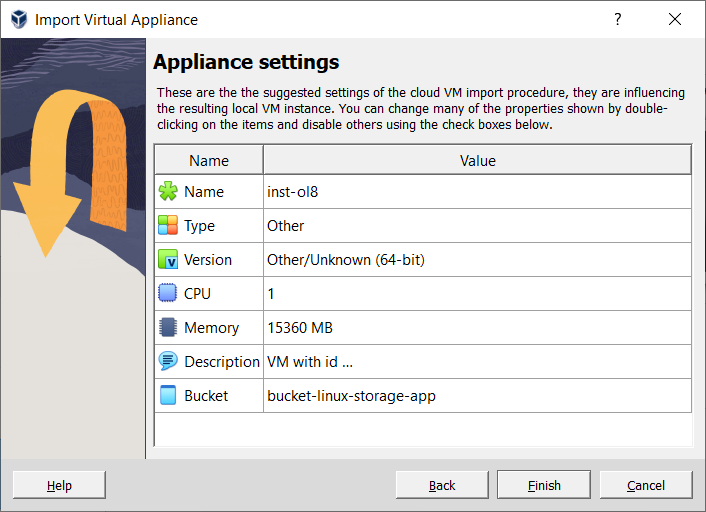Portable Virtualbox Mac
- Feb 26, 2010 A Portable-VirtualBox folder is created on your USB drive. Navigate to the Portable-VirtualBox folder and double-click the Portable-VirtualBox.exe file. The Portable-VirtualBox dialog box displays. Select the options you want (the four check boxes) and click the Download installation file of VirtualBox button.
- Jan 15, 2020 The Oracle VM VirtualBox program is a free and constantly evolving program. You can run Apple MacOS operating system on Windows operating systems using VirtualBox. Creating a new VM on VirtualBox is easy and simple. But when creating a Mac OS virtual machine with VirtualBox you may need to change some settings.
- Virtualbox has the option for a MacOS virtual machine in it’s New VM dialog, but we will need to make further adjustments to make it truly Mac-ready. Pop open Virtualbox, and Create a new Virtual Machine. Name this MacOS Mojave, and set it to Mac OS X (64-bit).
VirtualBox for Mac OS X is an extremely popular virtualization application with an amazingly rich functionality. The tool is absolutely cross-platform and is available for Windows, Linux, Solaris and Mac OS systems. It can run everywhere from small embedded systems or desktop class machines to.
Hi guys,i have a problem! my virtualbox portable 5.1.22 (newest version) isnt running on windows 10.
 and i cant update because i am using an usb stick on different computers. is there any solution to get vbox portable run on windows 10 ??
and i cant update because i am using an usb stick on different computers. is there any solution to get vbox portable run on windows 10 ??Virtualbox Mac Download
- Code: Select allExpand viewCollapse view
The virtual machine 'VM' has terminated unexpectedly during startup with exit code 1 (0x1).


- Code: Select allExpand viewCollapse view
Fehlercode:
E_FAIL (0x80004005)
Portable Virtualbox Macos


How To Install Mac Os In Virtualbox
- Code: Select allExpand viewCollapse view
1cf0.2350: Warning! Failed to load bcrypt.dll
1cf0.2350: supR3HardenedDllNotificationCallback: load 00007fff84ee0000 LB 0x00017000 C:WindowsSystem32CRYPTSP.dll [fFlags=0x0]
1cf0.2350: supHardenedWinVerifyImageByHandle: -> 0 (DeviceHarddiskVolume4WindowsSystem32cryptsp.dll)
1cf0.2350: supR3HardenedWinVerifyCacheInsert: DeviceHarddiskVolume4WindowsSystem32cryptsp.dll
1cf0.2350: supR3HardenedWinVerifyCacheScheduleImports: Import todo: #18 'bcrypt.dll'.
1cf0.2350: supHardenedWinVerifyImageByHandle: -> 0 (DeviceHarddiskVolume4WindowsSystem32rsaenh.dll)
1cf0.2350: supR3HardenedWinVerifyCacheInsert: DeviceHarddiskVolume4WindowsSystem32rsaenh.dll
1cf0.2350: supR3HardenedWinVerifyCacheProcessImportTodos: Processing 'bcrypt.dll'...
1cf0.2350: supR3HardenedWinVerifyCacheProcessImportTodos: 'bcrypt.dll' -> 'DeviceHarddiskVolume4WindowsSystem32bcrypt.dll' [rcNtRedir=0xc0150008]
1cf0.2350: supR3HardenedScreenImage/Imports: cache hit (Unknown Status -626 (0xfffffd8e)) on DeviceHarddiskVolume4WindowsSystem32bcrypt.dll [lacks WinVerifyTrust]
1cf0.2350: Error (rc=0):
1cf0.2350: supR3HardenedScreenImage/Imports: cached rc=Unknown Status -626 (0xfffffd8e) fImage=1 fProtect=0x0 fAccess=0x0 cHits=1 DeviceHarddiskVolume4WindowsSystem32bcrypt.dll
1cf0.2350: supR3HardenedMonitor_LdrLoadDll: pName=C:Windowssystem32rsaenh.dll (rcNtResolve=0xc0150008) *pfFlags=0x0 pwszSearchPath=0000000000000001:<flags> [calling]
1cf0.2350: supR3HardenedScreenImage/NtCreateSection: cache hit (VINF_SUCCESS) on DeviceHarddiskVolume4WindowsSystem32rsaenh.dll [lacks WinVerifyTrust]
1cf0.2350: supR3HardenedDllNotificationCallback: load 00007fff85ff0000 LB 0x00026000 C:WindowsSystem32bcrypt.dll [fFlags=0x0]
1cf0.2350: supR3HardenedScreenImage/LdrLoadDll: cache hit (Unknown Status -626 (0xfffffd8e)) on DeviceHarddiskVolume4WindowsSystem32bcrypt.dll [lacks WinVerifyTrust]
1cf0.2350: Error (rc=0):
1cf0.2350: supR3HardenedScreenImage/LdrLoadDll: cached rc=Unknown Status -626 (0xfffffd8e) fImage=1 fProtect=0x0 fAccess=0x0 cHits=2 DeviceHarddiskVolume4WindowsSystem32bcrypt.dll
1cf0.2350: Fatal error:
1cf0.2350: supR3HardenedDllNotificationCallback: supR3HardenedScreenImage failed on 'C:WindowsSystem32bcrypt.dll' / '??C:WindowsSystem32bcrypt.dll': 0xc0000190
6c4.b24: supR3HardNtChildWaitFor[2]: Quitting: ExitCode=0x1 (rcNtWait=0x0, rcNt1=0x0, rcNt2=0x103, rcNt3=0x103, 79 ms, the end);
a70.2280: supR3HardNtChildWaitFor[1]: Quitting: ExitCode=0x1 (rcNtWait=0x0, rcNt1=0x0, rcNt2=0x103, rcNt3=0x103, 563 ms, the end);
